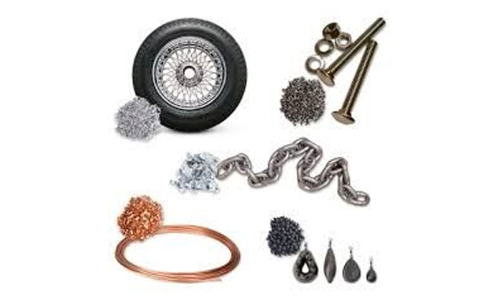Learn about metals

An element is a substance made up of all one kind of atom for example, the element helium the same stuff that fills balloons is made up exclusively of helium atoms Elements are generally classified as metals or nonmetals although some elements have characteristics of both these are called metalloids The majority of elements listed in the periodic table are metals These elements usually sh
An element is a substance made up of all one kind of atom: for example, the element helium (the same stuff that fills balloons) is made up exclusively of helium atoms. Elements are generally classified as metals or nonmetals (although some elements have characteristics of both; these are called metalloids). The majority of elements listed in the periodic table are metals. These elements usually share three main properties:
Luster: Metals are shiny when cut, scratched, or polished. Malleability: Metals are strong but malleable, which means that they can be easily bent or shaped. For centuries, smiths have been able to shape metal objects by heating metal and pounding it with a hammer. If they tried this with nonmetals, the material would shatter! Most metals are also ductile, which means they can be drawn out to make wire.
Conductivity: Metals are excellent conductors of electricity and heat. Because they are also ductile, they are ideal for electrical wiring. (You can test this using some household items. Keep reading to find out how!) These are some of the most important characteristics of metals, but there are other ones as well. Most metals have high melting points and all except mercury are solid at room temperature. They are also sonorous – they often make a ringing sound when hit.
Metals share many characteristics, but they don’t all have the same reactivity. Some metals don’t react at all with other metals, and because of this they can be found in a pure form (examples are gold and platinum). Because copper is relatively inexpensive and has a low reactivity, it’s useful for making pipes and wiring.
Other metals are highly reactive and combine easily with other elements, such as oxygen. These metals are never found in a pure form, and are difficult to separate from the minerals they are found in. Potassium and sodium are the most reactive metals. They react violently with air and water; potassium will ignite on contact with water!
Noble Metals are found as pure metals because they are unreactive and don’t combine with other elements to form compounds. Because they are so unreactive, they don’t corrode easily. This makes them ideal for jewelry and coins. Noble metals include copper, palladium, silver, platinum, and gold.Alkali Metals are very reactive. They have low melting points and are soft enough to be cut with a knife. Potassium and sodium are two alkali metals.
Alkaline Earth Metals are found in compounds with many different minerals. They are less reactive than alkali metals, as well as harder, and have higher melting points.
















